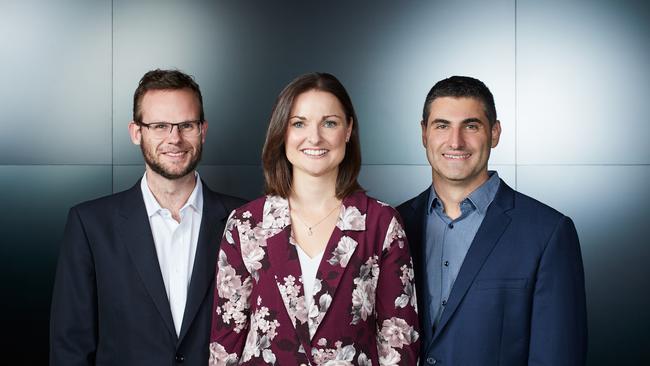Bub’s the word with help of new tech
An Australian artificial intelligence program designed to screen the quality of embryos during IVF is reducing the time and cost involved in achieving the pregnancy.

An Australian artificial intelligence program designed to screen the quality of embryos during IVF is shortening the time it takes to become pregnant and reducing the cost of fertility treatment.
Developed by Adelaide-based AI healthcare company Presagen, based in Adelaide’s innovation district, Lot Fourteen, the Life Whisperer Viability system uses AI to analyse embryos and assess their viability. The embryo ranking system increases the likelihood of a successful pregnancy by selecting the healthiest embryos to transfer during IVF.
According to Presagen’s chief executive and co-founder, Michelle Perugini, an international clinical trial involving 1600 embryo images found Life Whisperer Viability was 25 per cent more accurate in assessing an embryo’s viability than highly experienced embryologists alone, and reduced the time it took to become pregnant by 15 per cent.
“Our aim is to improve IVF success rates at every point and, as a result, reduce time-to-pregnancy, making IVF more affordable and accessible to patients globally.”
The web-based application program, which is authorised for sale in 30 countries, is easy to use. The AI works with the clinic’s existing camera to take 2D images of a patient’s embryos on day five of development.
Embryologists drag and drop the photos onto the application and within 15 seconds, the AI scores and ranks each of the embryos according to their viability and genetic integrity. The score helps clinicians decide which embryo to transfer, freeze, or send for further testing.
“The AI was trained on thousands of embryo images from patients that have undergone IVF treatment, as well as the outcome of whether they achieved pregnancy or whether the embryo was genetically normal,” Perugini says.
“The AI was then trained on this dataset – learning the complex physical features of the embryo that is associated with a viable embryo (for example, an embryo that is likely to lead to a clinical pregnancy) and a genetically normal (euploid) embryo. The AI is able to see complex features that are even too difficult to be seen with the human eye.”
Flinders Fertility’s scientific director, Ashleigh Storr, says the clinic began using the Life Whisperer Viability program in January 2020 to assist embryologists in deciding which embryos to transfer into the patient.
“In the lab, having Life Whisperer helps us feel confident that we are selecting the right embryo for the patient. If it’s seeing something that we can’t see, then we need to know that.
“The patient also wants to know as much as possible about whether or not that embryo has a chance of implanting.”
Storr believes AI will become more widely used to improve IVF treatment and outcomes.
“AI hasn’t been used extensively in the fertility field yet,” Storr explains, “but I think in the next 10 years we’ll see it start to grow, to support us when making decisions such as when to go ahead with an egg collection or what type of dose we give to a patient to stimulate their ovaries. There are so many areas where AIt can be applied.”
Following the success of the Viability program, Presagen launched Life Whisperer Genetics – an application that assesses the same 2D images to determine if an embryo is likely to be genetically normal.
The program is not a replacement for the traditional preimplantation genetic test, known as PGT-A, which screens for chromosomal abnormalities. Rather, Perugini describes Life Whisperer Genetics as the Covid RAT test of IVF.
“RAT tests are low-cost, instant, but have lower accuracy, and PCR are higher cost, take time, but are accurate. Similarly, PGT-A is invasive and requires a biopsy of the embryo, which can be risky or damage the embryo, is slow and can cost thousands of dollars, but is more accurate.
“Life Whisperer Genetics is non-invasive because it determines the likelihood of an embryo being genetically normal just from images, it is instant and low-cost, but is not as accurate.
“In a US study, we have shown that when Life Whisperer Genetics ranks embryos, the top-ranked embryo, 82 per cent of the time, will be genetically normal.”
Perugini argues that although it is not a substitute for the PGT-A test, Life Whisperer Genetics can reduce the cost of PGT-A screening as patients will only need to get their best few embryos tested rather than having all their embryos checked.
Presagen is currently working on an AI application to assess the developmental potential of oocytes (immature eggs) so women can be better assured that the eggs they are freezing for future use are good quality. The company also plans to expand into obstetrics and gynaecology, initially focusing on developing a system to rapidly diagnose endometriosis – a painful condition which currently can only be diagnosed through surgery.


